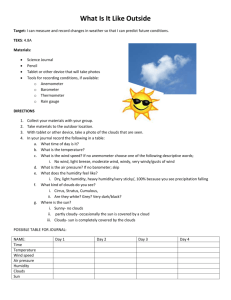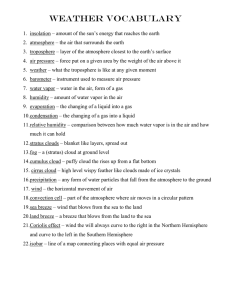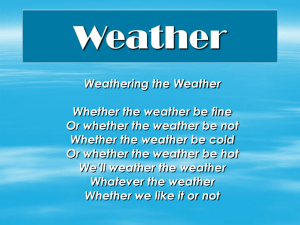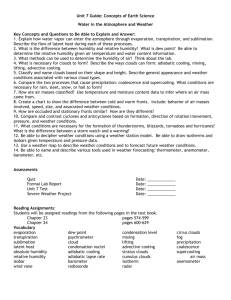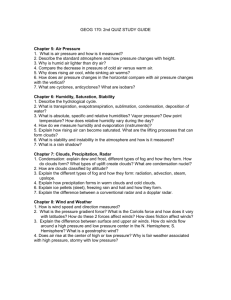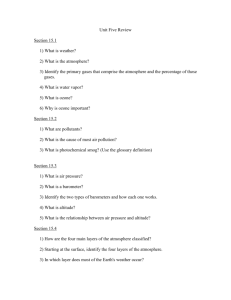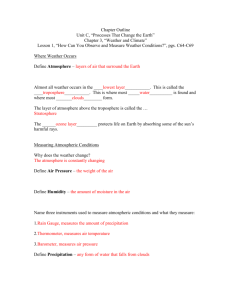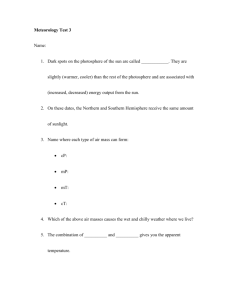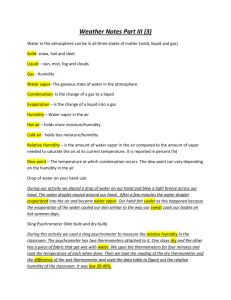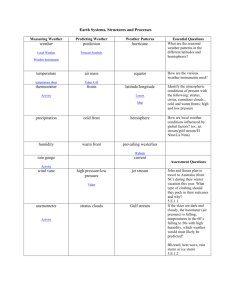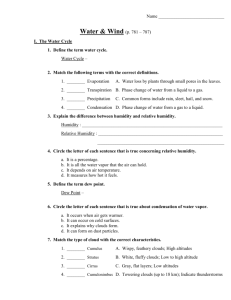File
advertisement
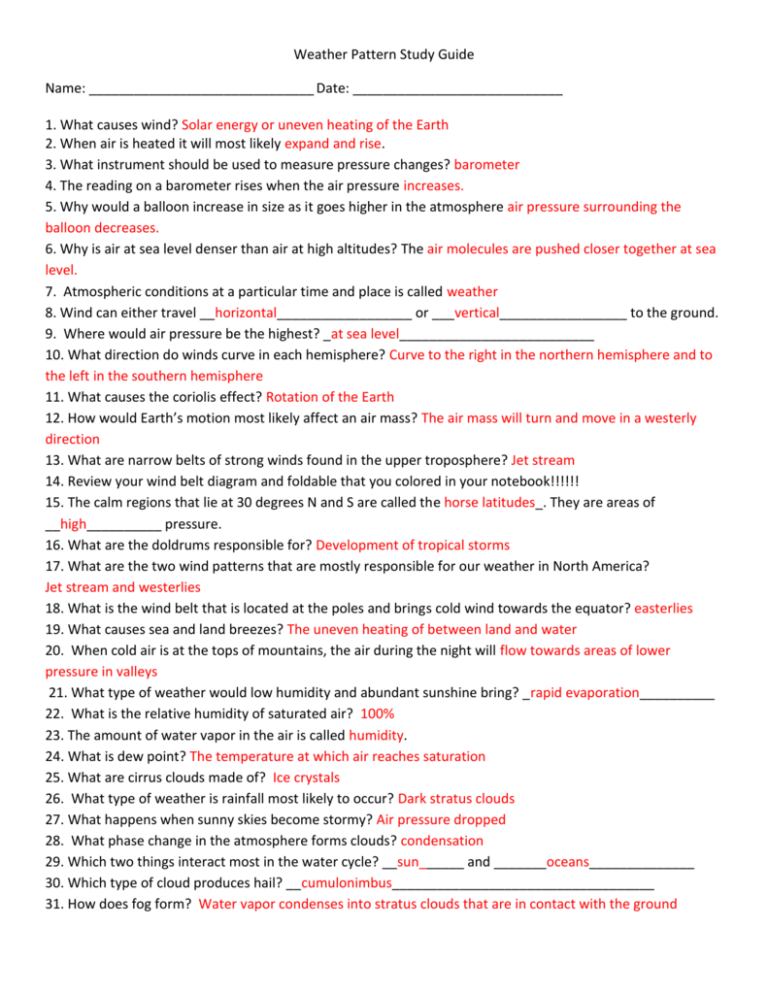
Weather Pattern Study Guide Name: ______________________________ Date: ____________________________ 1. What causes wind? Solar energy or uneven heating of the Earth 2. When air is heated it will most likely expand and rise. 3. What instrument should be used to measure pressure changes? barometer 4. The reading on a barometer rises when the air pressure increases. 5. Why would a balloon increase in size as it goes higher in the atmosphere air pressure surrounding the balloon decreases. 6. Why is air at sea level denser than air at high altitudes? The air molecules are pushed closer together at sea level. 7. Atmospheric conditions at a particular time and place is called weather 8. Wind can either travel __horizontal__________________ or ___vertical_________________ to the ground. 9. Where would air pressure be the highest? _at sea level__________________________ 10. What direction do winds curve in each hemisphere? Curve to the right in the northern hemisphere and to the left in the southern hemisphere 11. What causes the coriolis effect? Rotation of the Earth 12. How would Earth’s motion most likely affect an air mass? The air mass will turn and move in a westerly direction 13. What are narrow belts of strong winds found in the upper troposphere? Jet stream 14. Review your wind belt diagram and foldable that you colored in your notebook!!!!!! 15. The calm regions that lie at 30 degrees N and S are called the horse latitudes_. They are areas of __high__________ pressure. 16. What are the doldrums responsible for? Development of tropical storms 17. What are the two wind patterns that are mostly responsible for our weather in North America? Jet stream and westerlies 18. What is the wind belt that is located at the poles and brings cold wind towards the equator? easterlies 19. What causes sea and land breezes? The uneven heating of between land and water 20. When cold air is at the tops of mountains, the air during the night will flow towards areas of lower pressure in valleys 21. What type of weather would low humidity and abundant sunshine bring? _rapid evaporation__________ 22. What is the relative humidity of saturated air? 100% 23. The amount of water vapor in the air is called humidity. 24. What is dew point? The temperature at which air reaches saturation 25. What are cirrus clouds made of? Ice crystals 26. What type of weather is rainfall most likely to occur? Dark stratus clouds 27. What happens when sunny skies become stormy? Air pressure dropped 28. What phase change in the atmosphere forms clouds? condensation 29. Which two things interact most in the water cycle? __sun______ and _______oceans______________ 30. Which type of cloud produces hail? __cumulonimbus___________________________________ 31. How does fog form? Water vapor condenses into stratus clouds that are in contact with the ground
